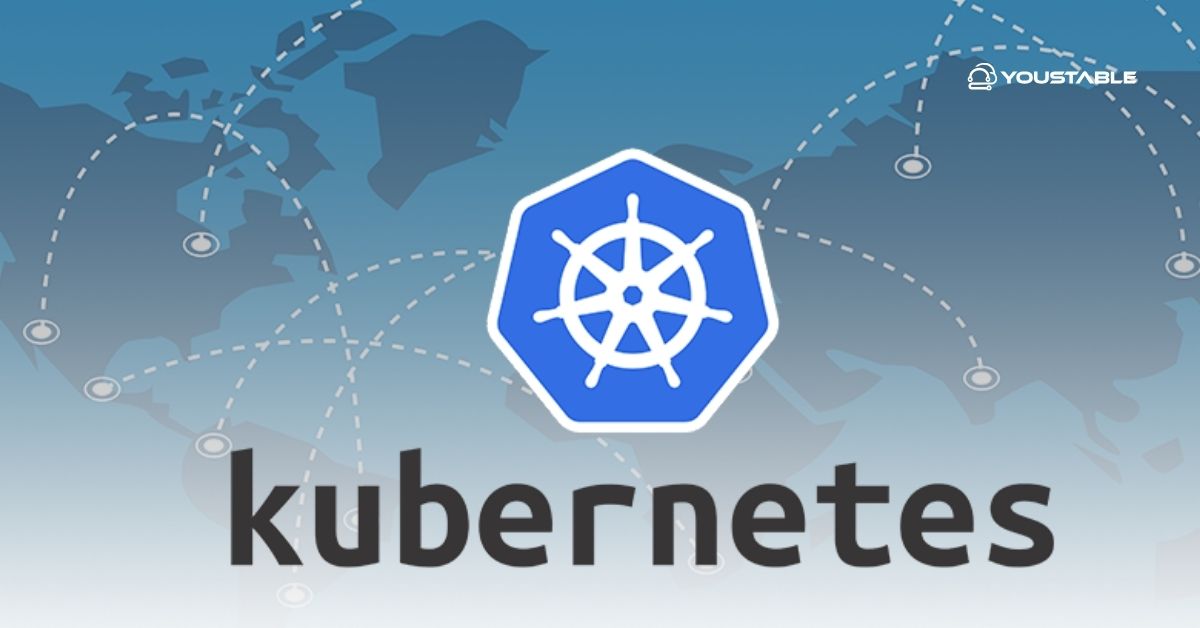Kubernetes is an open-source platform that automates container orchestration, making it easier to deploy, scale, and manage applications in containers. It’s widely used in production environments, but administrators may need to fix Kubernetes issues in Linux when problems arise that affect cluster performance or stability. Knowing how to fix Kubernetes on a Linux server is essential to maintaining a healthy, scalable, and reliable Kubernetes environment.
In this article, we’ll cover common issues faced with Kubernetes on Linux servers and provide solutions to fix them. From service failures to networking issues, we’ll guide you through troubleshooting steps, configuration fixes, and best practices to restore your Kubernetes cluster to a fully functional state.
Preliminary Steps Before Fixing Kubernetes

Before diving into specific fixes, it’s important to ensure that Kubernetes components are properly installed and configured.
Checking Kubernetes Logs
The first step in troubleshooting Kubernetes issues is to check the logs of the affected components. Kubernetes includes several key components, such as the API server, controller manager, scheduler, and kubelet.
To check logs for a specific Kubernetes component, you can use journalctl or kubectl logs. For example:
- API Server Logs:
sudo journalctl -u kube-apiserver- Kubelet Logs:
sudo journalctl -u kubelet- Pod Logs (for specific containers in a pod):
kubectl logs <pod_name> -n <namespace>Check for any error messages or warnings that might give insights into the issue.
Ensuring Kubernetes is Installed
Ensure Kubernetes is installed on your server. You can verify the installation by checking the versions of Kubernetes components:
kubectl version --client
kubeadm versionIf Kubernetes is not installed, follow the official installation guide for your Linux distribution (e.g., kubeadm for cluster initialization).
Checking Kubernetes Service Status
Check the status of Kubernetes components to ensure they are running. For example, check the status of the kubelet service:
sudo systemctl status kubeletIf any service is down or not running, try restarting it:
sudo systemctl restart kubeletIdentifying Common Kubernetes Issues
Kubernetes can encounter a variety of issues that may prevent it from functioning correctly. Below are some common issues that might arise:
- Kubelet Not Running or Crashing
The kubelet is the node agent responsible for managing the containers on each node. If it fails to start or crashes, pods won’t be scheduled or run on the node.
- API Server Not Responding
If the Kubernetes API server is down, cluster management becomes impossible. This can happen due to service failure, resource exhaustion, or misconfigurations.
- Pod Scheduling Issues
If pods fail to be scheduled or remain “Pending”, it may be due to resource constraints, node failures, or issues with the scheduler component.
- Networking Issues Between Pods
Pods in different nodes or even within the same node may fail to communicate due to networking issues, misconfigured network policies, or missing CNI (Container Network Interface) plugins.
- Cluster Not Initialized Properly
If Kubernetes was not initialized properly, it could lead to issues with cluster nodes joining or proper communication between components.
Fixing Kubernetes on Linux: Step-by-Step Solutions
Once you have identified the problem, follow these steps to fix Kubernetes on your Linux server.
Restarting Kubernetes Components
Sometimes, restarting the affected components can resolve issues. For example:
- Restart the kubelet:
sudo systemctl restart kubelet- Restart the Kubernetes API server:
sudo systemctl restart kube-apiserver- Restart all Kubernetes components on the master node:
sudo systemctl restart kubelet kube-apiserver kube-controller-manager kube-schedulerAfter restarting, check the status of the services:
sudo systemctl status kubeletIf the components are running fine after the restart, the issue may have been a temporary glitch.
Fixing API Server Not Responding
If the Kubernetes API server is down or unresponsive, you can troubleshoot the issue by:
- Checking the API Server Logs:
sudo journalctl -u kube-apiserver- Reviewing Kubernetes Configuration:
The API server may fail due to incorrect settings in the Kubernetes configuration file (/etc/kubernetes/manifests/kube-apiserver.yaml). Ensure that the configuration is correct and that the API server can communicate with etcd.
- Checking etcd Connectivity:
The API server relies on etcd for storing cluster state. If there are issues connecting to etcd, it can cause the API server to fail. Ensure that etcd is healthy and reachable. You can check etcd health with:
etcdctl endpoint healthFixing Pod Scheduling Issues
If pods are stuck in the “Pending” state, the root cause may be due to insufficient resources, node failure, or misconfiguration. Follow these steps:
- Check Node Availability:
Verify that the nodes are in a Ready state:
kubectl get nodesIf a node is not in a Ready state, check the logs of the kubelet on that node:
sudo journalctl -u kubelet- Check Resource Constraints:
If resources like CPU or memory are exhausted, Kubernetes may not be able to schedule pods. Check resource usage with:
kubectl top nodes kubectl top podsYou may need to add more resources to your nodes or adjust the pod resource requests and limits.
- Check Pod Affinity and Taints/Tolerations:
Ensure there are no misconfigurations in pod affinity or taints/tolerations that may prevent the pod from being scheduled on the right node. Use the following command to check the pod status:
kubectl describe pod <pod_name>Look for affinity, taints, or tolerations in the pod description.
Fixing Networking Issues Between Pods
Networking issues can arise between pods on different nodes or even within the same node. The root cause could be:
- CNI Plugin Misconfiguration:
Kubernetes relies on CNI (Container Network Interface) plugins for networking. Ensure the CNI plugin (e.g., Calico, Flannel) is properly installed and configured. Check if the CNI daemon is running:
sudo systemctl status calico-node- Check Network Policies:
Misconfigured network policies can block pod-to-pod communication. Check if any restrictive network policies may be preventing traffic between pods:
kubectl get networkpolicies --all-namespaces- Check for NodePort or LoadBalancer Issues:
If you’re using a NodePort or LoadBalancer service, ensure that the respective ports are open on the firewall, and the load balancer configuration is correct.
- Check DNS Resolution:
DNS resolution within Kubernetes is provided by CoreDNS or kube-dns. Check if DNS is functioning properly by testing name resolution:
kubectl run -i --tty --rm busybox --image=busybox --restart=Never -- nslookup kubernetes.defaultIf DNS is not resolving, check the logs for coredns:
kubectl logs -n kube-system -l k8s-app=kube-dnsReinitialize Kubernetes Cluster (If Necessary)
If the cluster was not initialized properly, you may need to reinitialize it using kubeadm.
- Reset the Cluster (on all nodes):
sudo kubeadm resetThis command will undo the changes made by kubeadm init or kubeadm join.
- Reinitialize the Cluster (on the master node):
If the master node is not properly initialized, you can reinitialize the cluster using:
sudo kubeadm init --pod-network-cidr=192.168.0.0/16After initialization, set up the kubeconfig file for the kubectl command:
mkdir -p $HOME/.kube sudo cp -i /etc/kubernetes/admin.conf $HOME/.kube/config sudo chown $(id -u):$(id -g) $HOME/.kube/config- Join Worker Nodes to the Cluster:
Use the kubeadm join command from the initialization output to join worker nodes to the cluster.
Optimizing Kubernetes for Linux Servers
Once Kubernetes is fixed, consider implementing the following best practices to optimize it for performance and reliability:
Optimize Node Resource Allocation
Monitor resource usage using kubectl top nodes and kubectl top pods regularly. Ensure that nodes are not overutilized by adjusting the CPU and memory limits for each pod and container.
Use Horizontal Pod Autoscaling
Implement Horizontal Pod Autoscaling (HPA) to automatically adjust the number of pods in your deployment based on CPU or memory usage. This helps maintain application performance under varying loads.
Ensure High Availability
Deploy Kubernetes with high availability in mind. Use multiple control plane nodes for redundancy and configure etcd clusters for fault tolerance.
Implement Backup and Disaster Recovery
Set up regular backups of Kubernetes components like etcd, configuration files, and secrets. Implement a disaster recovery plan in case of a cluster failure.
Conclusion
Fixing Kubernetes on a Linux server involves identifying common issues such as service failures, pod scheduling problems, and network misconfigurations. By following the troubleshooting steps in this guide, you can restore Kubernetes functionality and ensure that your cluster operates smoothly. Regularly monitor your cluster’s health, optimize resource usage, and keep Kubernetes up-to-date to avoid issues in the future.



